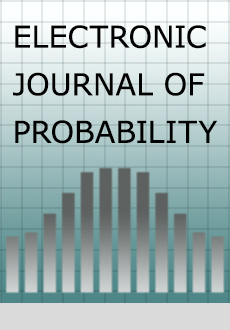Abstract
We introduce a model of evolving preferential attachment trees where vertices are assigned weights, and the evolution of a vertex depends not only on its own weight, but also on the weights of its neighbours. We study empirical measures associated with edges with endpoints having certain weights, and degrees of vertices having a given weight. We show that the former exhibits a condensation phenomenon under a certain critical condition, whereas the latter behaves like a mixture of a power law distribution, depending on the weight distribution. Moreover, in the absence of condensation, for any measurable set we prove almost-sure convergence of the measure of that set under the related measure. This generalises existing results on the Bianconi-Barabási tree as well as on an evolving tree model introduced by the second author. Finally, as an application of our results, we provide criteria under which the degree distribution of this model behaves like a power law, and prove a limiting statement about the growth of the neighbourhood of a fixed vertex.
Funding Statement
Research supported by the EPSRC grant EP/P026729/1.
Acknowledgments
We would like to thank two anonymous referees for their comments, which helped us improve the presentation of our results.
Citation
Nikolaos Fountoulakis. Tejas Iyer. "Condensation phenomena in preferential attachment trees with neighbourhood influence." Electron. J. Probab. 27 1 - 49, 2022. https://doi.org/10.1214/22-EJP787
Information





